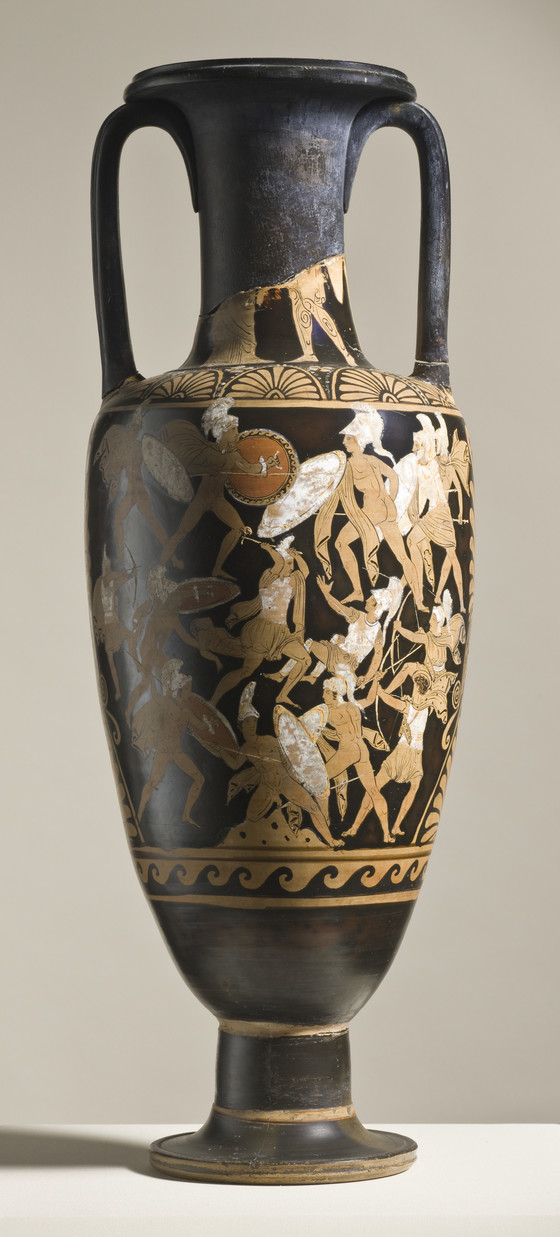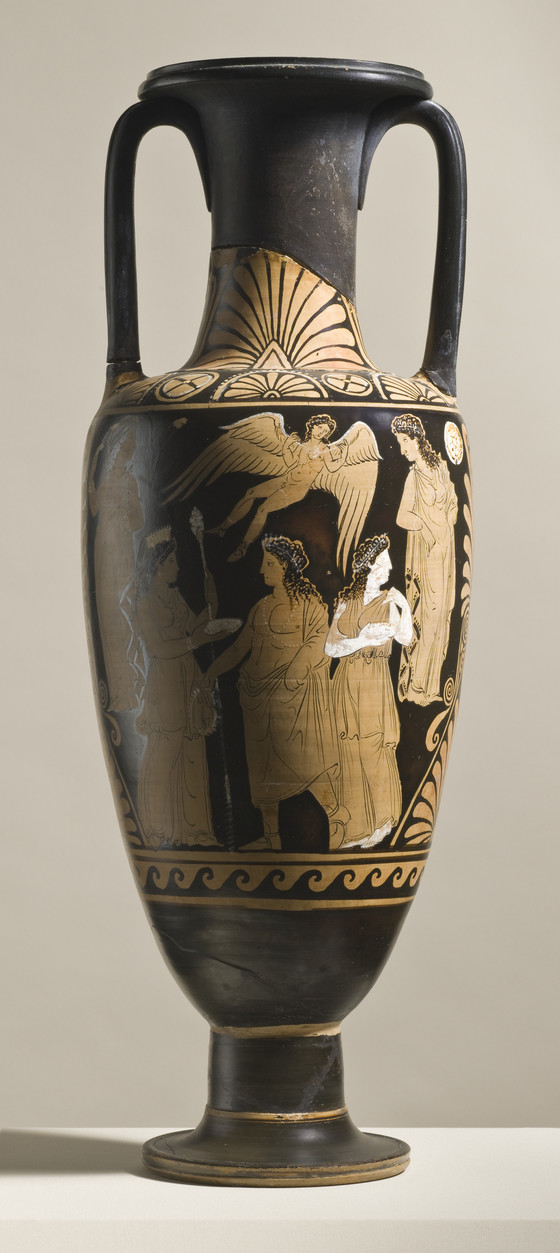Around the third quarter of the fifth century B.C., Greek communities in Southern Italy and Sicily began to produce their own red-figure pottery....
Around the third quarter of the fifth century B.C., Greek communities in Southern Italy and Sicily began to produce their own red-figure pottery. The early examples look very similar to the Athenian, but there develops a trend for particularly elaborate and crowded compositions, often richly decorated with added red, yellow and white. The most distinctive examples are the large volute-kraters produced by Apulian workshops that were destined for funerary use. This vase, however, was made in the region of Campania, and dates to the last third of the fourth century B.C. There is a large hole in the base, suggesting that at least in its final role - it was not used for storage.
The body of the vase carries two very different scenes. On one side is a massed battle of fifteen warriors. At the centre is a soldier who pulls a nude corpse from the fray, protecting it with his shield. Many have identified the body as the Greek hero Patroklos, and seen the battle as that at Troy. Without inscriptions, however, it is not possible to be certain, although it is safe to say that the scene is heroic. It may owe something to a wall-painting; the crowded composition is certainly better suited to a flat surface, and the attempt to depict figures in space - such as the archer at the bottom right, with his back to us and only the side of his face visible - is likewise less convincing on the curved surface of the vase. The other side depicts figures at a larger scale. A woman wearing a veil and a polos (hat) holds a thyrsos and phiale before a long-haired youth, who is accompanied by a second woman, also with a phiale, who seems to turn back tentatively. The presence of Eros, flanked by a woman on either side, suggests marriage, but the identities of the protagonists remain elusive.
The vase has long been known, and appears in a painting by the French artist, Alexandre-Isidore Leroy de Barde (1777-1828). It had been described by the art historian Johan Joachim Winckelmann (1717-1768) in 1758 when it was in the collection of the Duc de Noya.
More...




